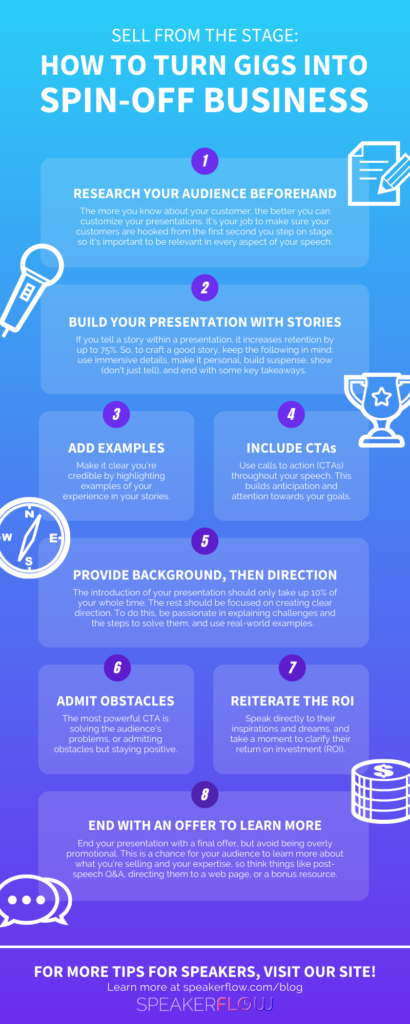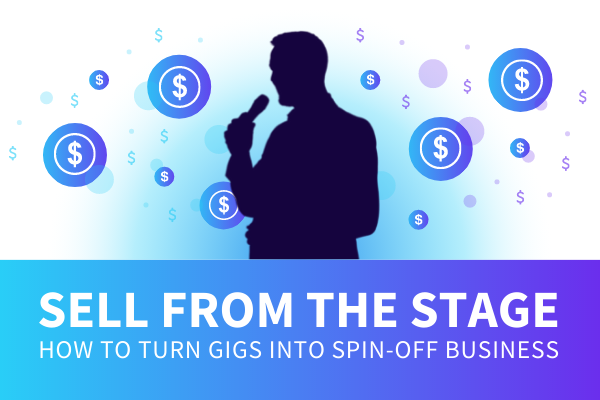Every time you get on the stage as a speaker, you have an opportunity to sell to your audience. Speaking is not only a chance to earn money, but it’s a chance to leverage long-term potential in your business. Whether you’re hoping to sell a seminar, online course, book, or your expertise, you need to understand how to sell from the stage.
However, selling from the stage is often a balancing act. You want to make it clear that you’re offering something high-value, but you don’t want to come across like a sleazy car salesman. In reality, speaking is a way to position yourself as a thought leader. Not only do you have a chance to showcase your experience and perspective, but you have the undivided attention of your audience. You can’t say the same for other platforms like social media or online ads.
With the average attention span resting under 10 minutes, every second selling from the stage counts. You can’t afford not to connect with your audience or leverage the time you have. Anyone can be a professional, paid speaker, but it takes more than natural talent. You need practice, purpose, and experience. Beyond that, you need to know how to confidently sell.
There’s a big difference between speaking to motivate or educate your audience and speaking to sell. You need to give your audience a real reason to take action. As a speaker, you have the opportunity to sell from the stage to land more customers, clients, and gigs. Not sure where to begin? The experts at SpeakerFlow are here to help.
- 1. Research your audience in detail before the event.
- 2. Build your presentation using narratives.
- 3. Lace examples of your credibility throughout your stories.
- 4. Place strategic calls to action throughout your speech.
- 5. Shift from providing background information to providing direction.
- 6. Admit obstacles but keep a motivational mindset.
- 7. Reiterate the steps to succeed and the ROI.
- 8. End your presentation with an offer to learn more.
- Influence People to Take Action from the Stage
1. Research your audience in detail before the event.
First, you need to understand your audience. If you’re speaking to everyone, nobody will actually hear you. With a reported 65% of marketers rarely or never doing audience research, don’t skip this essential step. The more you know about your customer, the better you can customize your presentations. It’s your job to make sure your customers are hooked from the first second you step on stage.

How can you research your audience? One of the best ways to start is by creating a customer persona. This is a representation of who your ideal customer is. It outlines their demographics, their needs, and their challenges. Better yet, it identifies why you’re best-suited to deliver their solution. Nobody wants to feel sold to in an abrupt way. They want to be understood as individuals, and this is why you need to know your audience.
To see this in action, look at the public speaker and content marketing extraordinaire Valeria Lipvetsky. This blogger, model, and social media superstar was recently featured at LaterCon, a social media conference for marketing managers, influencers, and brands.
While she shared real-world expertise in her presentation, she also focused on the success of her own company, Valeria Inc. Because she knew she was speaking to her target audience (brand managers), she promoted her in-house creative production company.
2. Build your presentation using narratives.
Next, don’t just share a parade of facts, figures, and statistics. Instead, build your presentation around narratives and stores. As humans, we connect through stories. If you tell a story within a presentation, it increases retention by up to 75%. Your goal when selling from the stage is to connect with others, not just spout out facts.
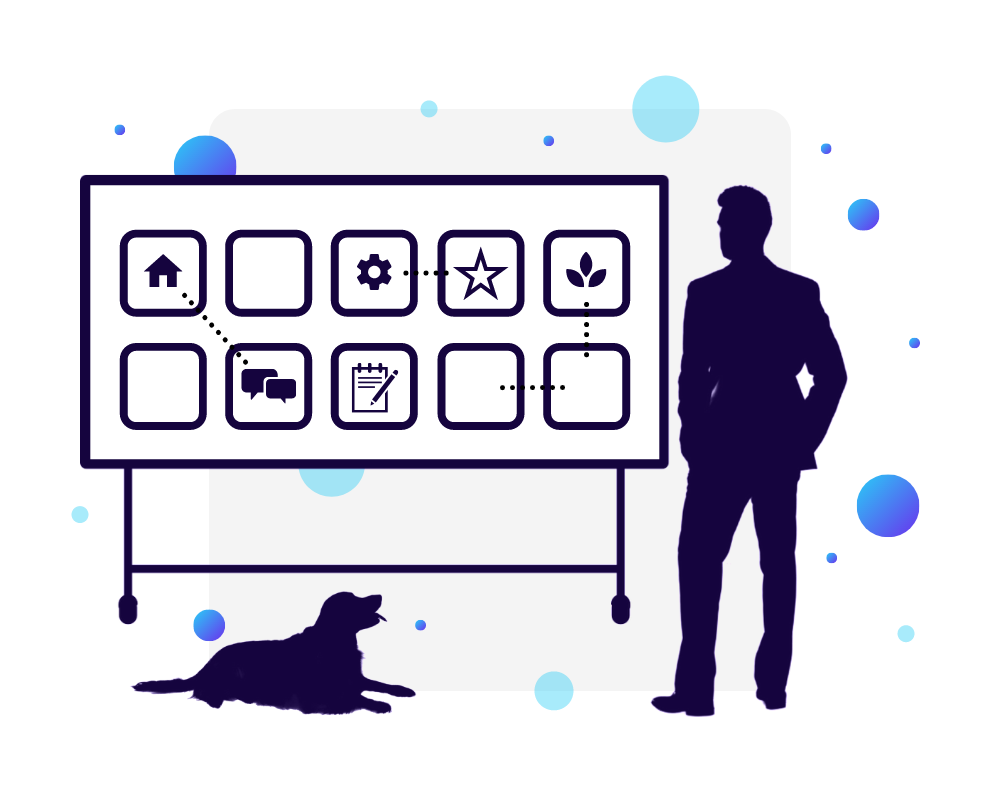
Since ancient times, humans have used narratives to understand their community and the role we all play in it. Stories increase people’s sense of feeling understood and ‘heard.’ They build trust in the speaker, and it creates the right environment for decision-making based on empathy. In sales, it’s all about connecting with others. If your audience doesn’t trust you, they won’t buy from you.
Our brains are hardwired to process information in the form of stories. Think of the magic behind “once upon a time.” There’s a reason that phrase immediately brings us to a far-off, imaginary scene. You don’t have to reinvent the wheel when it comes to storytelling. In fact, it’s best to stick with the tried-and-the-true. Here are some storytelling techniques used by the top speakers:
- Use immersive details: If you’re describing something that might be hard for the average person to understand, be clear with your details. Consider this like a mental movie you’re setting for your audience, using strong descriptive language that sets the scene.
- Make it personal: It’s okay to be vulnerable with your audience. Though it might be scary, sharing a personal story has universal appeal. Consider some of the classic story tropes like the winning underdog, the inspired hero, or a rags-to-riches tale.
- Build suspense: The best stories have conflict. They’re not all sunshine and rainbows—this doesn’t capture anyone’s attention. Instead, build real suspense to make the audience wonder what happens next.
- Show don’t tell: Transport your audience into a scene instead of simply telling them something. You can use a scene-by-scene construction or descriptive words to paint a picture.
- End with a takeaway: Lastly, always end with a takeaway or call to action. This is a memorable, bite-size thing your audience can bring with them even if they forget the rest.
3. Lace examples of your credibility throughout your stories.
Third, use examples throughout your stories to build credibility. It’s not enough to sell from the stage without the expertise and real-world know-how to back it up. This makes it look like your sales proposition is leaning on a house of cards. Instead, make it clear you’re credible by showing examples of your experience.
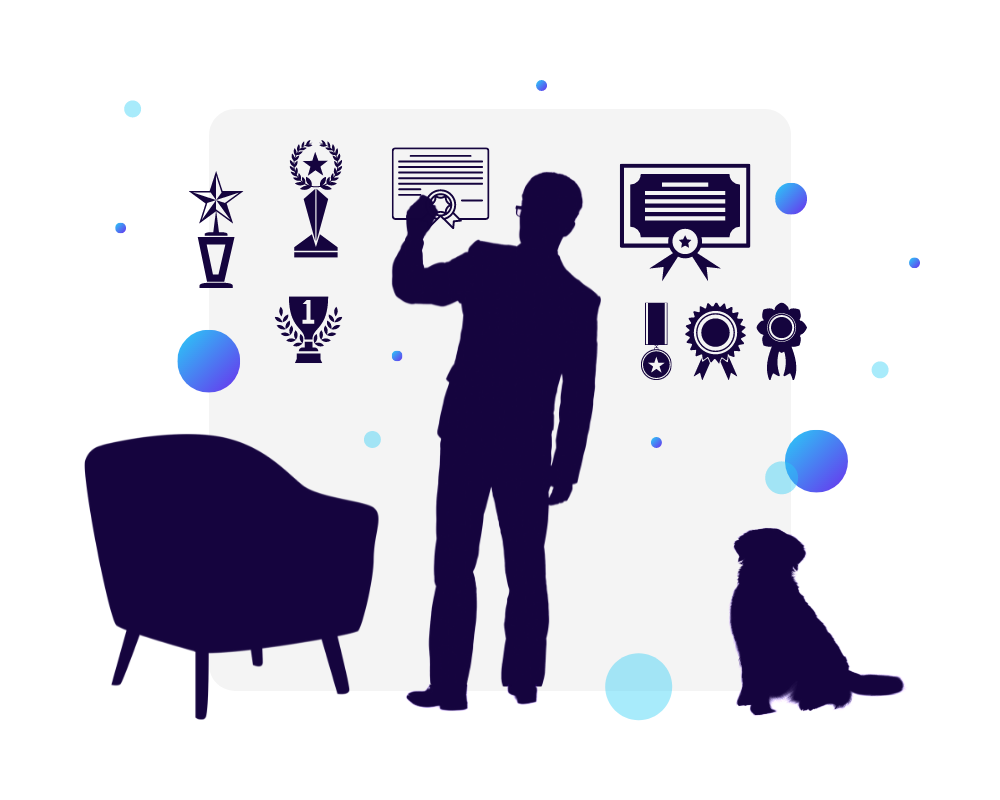
However, when doing this, avoid falling into the trap of ego. Bragging and self-promotion have the opposite effect on audiences. It can be a big turn-off, and it sends the message that you’re looking to one-up the audience. Rather, your stories should make you relatable to your audience. You’ve been through the things they’ve experienced. Because of this, you’re a trustworthy source of advice.
An example of credibility through storytelling in action is the work of Molly Fletcher. Fletcher specializes in talking about negotiation mistakes, women in business, and unleashing your career potential. Though she shares real-life stories of her own ups and downs, it’s her credibility that really makes an impact.
With two decades of experience as one of the world’s only female sports agents, she knows what it means to stand out in a crowded industry. The author of four books about career success, she’s successfully proven that she knows how to negotiate her way to the top. This expertise and credibility builds strong trust with each audience, creating an optimal environment for selling her training, books, and more with each speech.
4. Place strategic calls to action throughout your speech.
Similarly, don’t just wait until the end to make your move. While there’s often the expectation that you should only sell at the end, you can use actionable language throughout your speech. This builds anticipation and attention towards your primary goals, helping your audience reach the same conclusion.
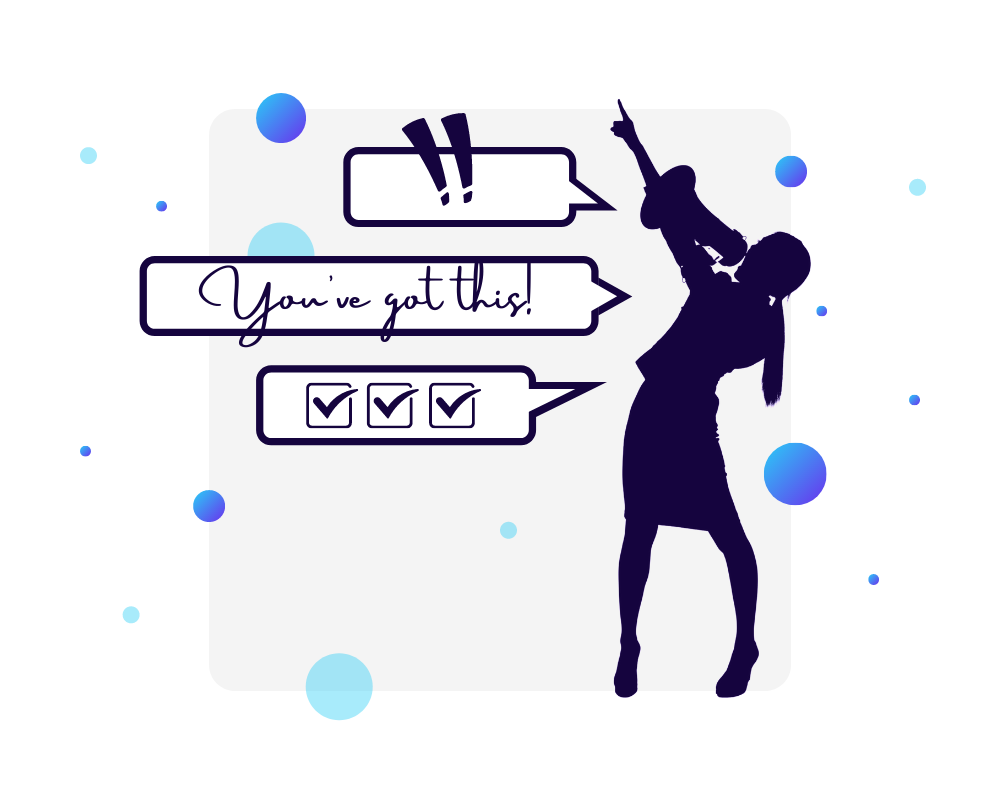
When you mention your offer, product, or service, think of yourself as planting a seed. You’re preparing that audience member to make a decision. If you don’t lay a strong foundation, you can’t expect that seed to actually grow into anything substantial. This doesn’t mean you have to directly state your offer from the start. In fact, it depends on your goals.
There’s a clear difference between direct and indirect selling:
- Direct selling: With direct selling, you clearly let your audience know an offer is coming. You might mention you’ll share more information about your service/product later on, piquing the audience’s interest right away.
- Indirect selling: On the other hand, indirect selling is more subtle. This is designed to get your audience curious about what’s coming next. You might casually mention that this is something you share in your own course, book, or so on, without drawing extra attention to your product/service.
In some cases, you don’t have to choose one or the other when it comes to direct or indirect selling. The best speakers who sell from the stage leverage both methods to entice their audience to consider their offer before it’s even presented. By the time you get to the final sell, your audience has already heard about your offer several times. More importantly, they’re interested in learning more.
5. Shift from providing background information to providing direction.
Fifth, when you sell from the stage, you need to make a clear shift towards a specific direction. Consider yourself as a tour guide. While you might start your tour by sharing basic background information about yourself and your expertise, you don’t want to focus on this forever. Soon, you want to shift to providing clear direction throughout the tour. The same is true for your speech.

While the first few steps when selling from the stage are about building anticipation and curiosity, it’s now time to assert what your audience should do. This next section is all about encouraging action. Since you’ve already been creating desire throughout your presentation, you’re now ready to enter a formal offer.
The introduction of your presentation should only take up 10% of your whole time. The rest should be focused on creating clear direction. How can you force your audience to want to take action? Here are proven ways to inspire your audience:
- Passion: First, you absolutely have to lead with passion. If you don’t speak from a place of passion, you can’t expect your audience to feel any real urgency or purpose.
- Identify challenges: Next, connect with your audience by identifying challenges they’re likely already familiar with. They need to hear from you in your own words why you chose this topic, product, or service. You need to understand the core of what you’re doing, and you need to communicate it in a meaningful way.
- Steps: Outline clear steps you’ve taken to get where you are today. You want your audience to know you’re not just a talker. You’re a do-er. More importantly, you’re someone they can feel confident trusting.
- Present tense: Finally, use present tense when speaking. Keep your language actionable (ie. “Connect with your team” vs. “You should consider connecting with your team.”). It’s essential that your audience stays in the moment with you.
6. Admit obstacles but keep a motivational mindset.
Sixth, don’t be afraid to challenge yourself publicly.y While this might sound counterintuitive, it’s actually a way to overcome objections. You can say things like “You may run into… but you can get around that by doing…” and so on. If you’re giving directions without being mindful of things that might get in their way, they’re going to think you “don’t really understand how hard it would be for them” and lose interest.
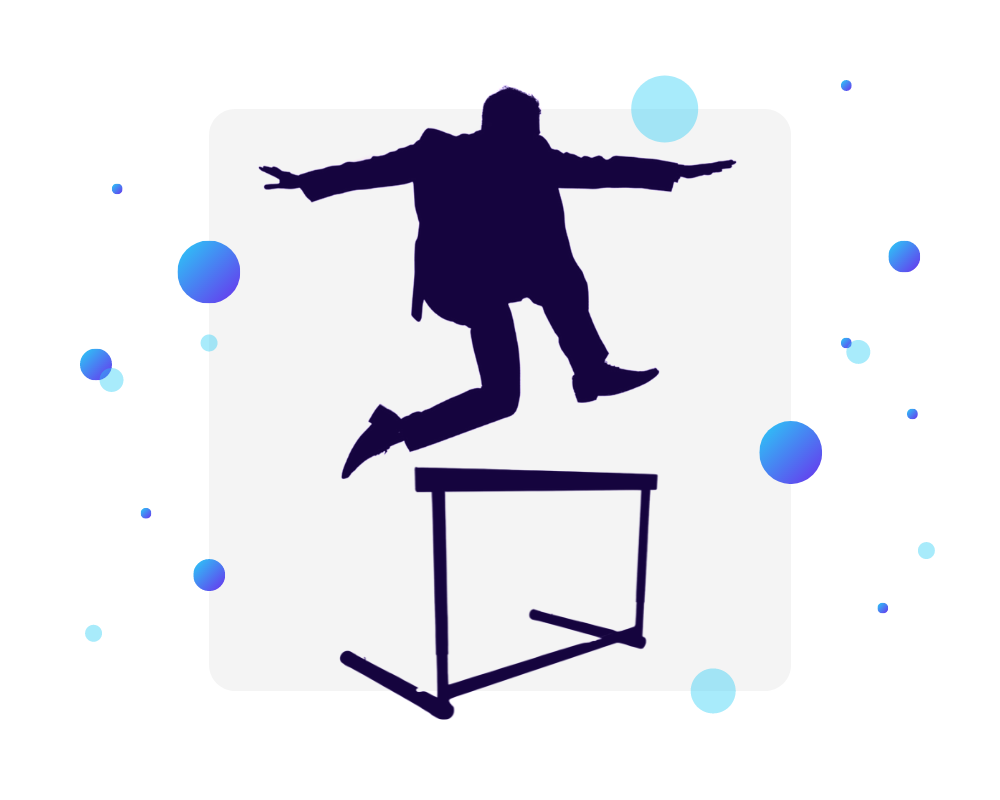
By making it clear that you thought things through, you encourage your audience to take action. This means understanding your audience’s key challenges—as well as how to solve them. Preparing beforehand is the best way to navigate these obstacles in advance. When you know what questions are on the top of your customers’ lips, you can ask them first.
Professional speaker and seller Nancy Duarte does this beautifully. She considers her audience as the hero of her idea. She’s the mentor, and she’s there to make sure they succeed. She captures the resistance of her audience, making sure they feel confident solving these obstacles with her own solutions. The most powerful call-to-action, according to Duarte, is to solve your customers’ problems. This means admitting obstacles but staying positive and motivational.
7. Reiterate the steps to succeed and the ROI.
Next, before you get into your final offer, restate the steps for success. Detail your program and sales content so they know exactly what to get. Most importantly, do this before you share the price. Your audience needs to recognize the real value of your offering before they worry about what it costs.

Keep in mind that your audience what’s to become something more than they want to be sold to. This means painting a picture of what they’ll achieve thanks to your offering vs. what you’re selling them. Speak directly to their inspirations and dreams. From there, take a moment to clarify their return on investment (ROI).
This doesn’t have to be complicated. Remember to emphasize the contrast between the ROI and the cost of doing nothing. You don’t have to guarantee anything. Share client stories, testimonials, and other successes. Make your offer into a choice: they can take action or they can do nothing.
Remember, you’re not just selling yourself and your expertise when you sell from the stage. Rather, you’re selling a solution. For example, if you’re a social media marketing expert, you’re selling the ability to land more leads through social media. When you focus on solutions, you come across as more genuine and meaningful to your audience.
8. End your presentation with an offer to learn more.
Last but not least, end your presentation with a final offer. This is a chance for your audience to learn more about what you’re selling and your expertise. Be sure this isn’t overly self-promotional. Your final offer should feel natural. You might do any of the following:

- Offer to answer questions in a Q&A format
- Mention you’ll meet with members of the audience after to share more information
- Direct them to a website or landing page
- Share business cards or other marketing materials
- End your presentation with a slide sharing contact information
- Give a special discount, bonus, or offer to inspire people to take action
What will the impact be if your audience says yes to your offer? Who will they become, and what will they accomplish? Show the real value and give them an offer that’s too good to pass up. If you’ve successfully engaged with your audience on an authentic level, you’ve got nothing to worry about.
As a speaker, your income is often tied to speaking gigs. If you want to take this to the next level, you need to be confident selling from the stage. When you leverage your skills both on and off stage, you break the income glass ceiling to build reliable businesses. It just starts with your offer. From there, you’re ready to sell your expertise, services, or products.
Influence People to Take Action from the Stage
In conclusion, selling from the stage doesn’t have to be intimidating. While the word ‘selling’ can often be off-putting, it’s really about influencing people to take action. Whether this means buying a product, booking a session with you, or following you on social media, it all adds up. If you follow these 8 steps above, you’ll learn how to turn one-off gigs into long-term businesses.
As a speaker, you’re in a position of authority. You need to take this to the next level by knowing how to sell your ideas effectively. Your message can be monetized to suit your business, turning your expertise into an influential brand.
